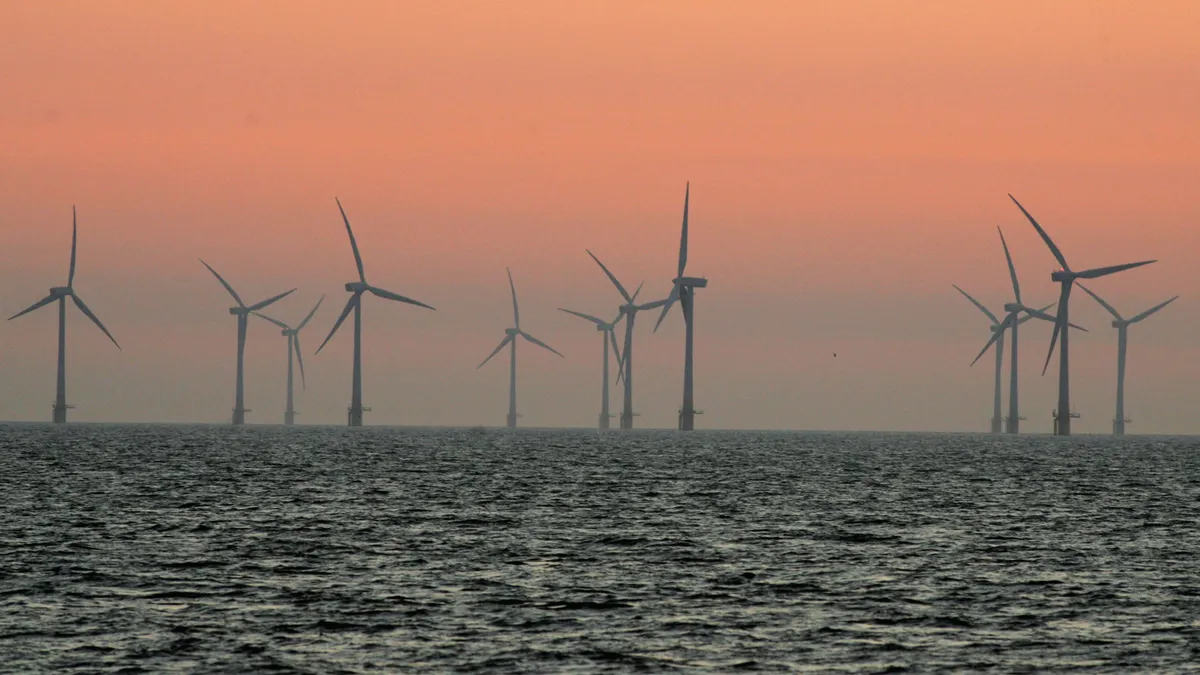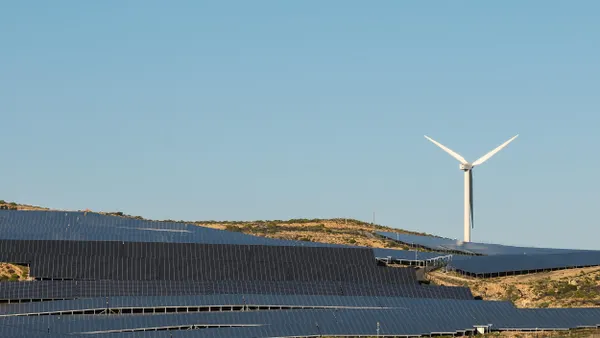Dive Brief:
- The California legislature last week passed a bill that would direct state regulators to lay the groundwork for developing wind energy resources off the West Coast.
- Assembly Bill 525, which is now headed to the governor's desk, instructs regulators to create 2030 and 2045 goals for offshore wind, as well as a broader strategic plan for developing the resource.
- Experts say the bill will help organize the moving pieces needed to set up the state's offshore wind sector. "This is just a new technology and it's sort of a chicken-and-egg situation — if you build it, building more will become cheaper," said Mohit Chhabra, senior scientist with the Natural Resources Defense Council (NRDC).
Dive Insight:
The legislation comes on the heels of an effort announced by the Biden administration this year to bring online up to 4.6 GW of floating wind off the West coast. In total, the administration is looking to deploy 30 GW of offshore wind around the country by the end of the decade.
A recent report from the USC Schwarzenegger Institute for State and Global Policy found that developing 10 GW of offshore wind in the state would lead to total resource cost savings of around $1 billion and create tens of thousands of jobs. In addition, the higher capacity factors and timing of peak electricity generation of offshore wind could bolster reliability, as well as potentially reduce 4.73 million metric tons of carbon dioxide equivalents by 2040, the report said.
AB 525 would require the California Energy Commission to establish offshore wind planning goals for the end of the decade and 2045, as well as develop a strategic plan for offshore wind deployments in federal waters off the West Coast. Per the bill, the agency would need to submit that plan to state lawmakers by June 2023.
Among other things, the legislation would have the commission look at suitable sea space for offshore wind in federal waters, study the transmission investments that would be needed to meet the 2030 and 2045 planning goals, and put together a permitting roadmap with timeframes for receiving permits for the offshore wind resources themselves, as well as related transmission infrastructure.
The legislation was largely welcomed by clean energy advocates, including American Clean Power-California Director Danielle Osborn Mills.
"[T]his bill ensures offshore wind will be an important part of the state's efforts to decarbonize the economy, create renewable energy jobs, and provide reliable, low-cost, carbon-free power for every community," Osborn Mills said in a statement.
Offshore wind development in California faces three broad categories of challenges, according to NRDC's Chhabra — finding an environmentally responsible way to deploy the resources; finding guaranteed offtakers and resource commitments from policy-makers, regulators and utilities; and navigating the environmental and other regulatory checks that come with working across state lands, state waters and federal waters.
"Because there's so many moving pieces here, it's really hard to serialize this. You need some organization… around how all of these pieces are going to fit together," Chhabra said, adding that hopefully this bill will provide that.
But while the bill represents an important signal that California is interested in offshore wind, it does not make any formal commitments, noted Nancy Rader, executive director of the California Wind Energy Association.
"[W]e've got some really big challenges — first is the state really needs to make a commitment to offshore wind in order to attract the industry investment here, and it hasn't yet made that commitment," unlike some East Coast states that have mandates for offtakers to purchase offshore wind, she said.















